ICGOO在线商城 > 集成电路(IC) > PMIC - 稳压器 - DC DC 开关稳压器 > TPS61086DRCT
- 型号: TPS61086DRCT
- 制造商: Texas Instruments
- 库位|库存: xxxx|xxxx
- 要求:
| 数量阶梯 | 香港交货 | 国内含税 |
| +xxxx | $xxxx | ¥xxxx |
查看当月历史价格
查看今年历史价格
TPS61086DRCT产品简介:
ICGOO电子元器件商城为您提供TPS61086DRCT由Texas Instruments设计生产,在icgoo商城现货销售,并且可以通过原厂、代理商等渠道进行代购。 TPS61086DRCT价格参考。Texas InstrumentsTPS61086DRCT封装/规格:PMIC - 稳压器 - DC DC 开关稳压器, 可调式 升压 开关稳压器 IC 正 2.8V 1 输出 2A(开关) 10-VFDFN 裸露焊盘。您可以下载TPS61086DRCT参考资料、Datasheet数据手册功能说明书,资料中有TPS61086DRCT 详细功能的应用电路图电压和使用方法及教程。
| 参数 | 数值 |
| 产品目录 | 集成电路 (IC)半导体 |
| 描述 | IC REG BOOST ADJ 2A 10-SON稳压器—开关式稳压器 18.5V PFM/PWM Step- Up DC-DC Converter |
| DevelopmentKit | TPS61086EVM-526 |
| 产品分类 | |
| 品牌 | Texas Instruments |
| 产品手册 | http://www.ti.com/litv/slvsa05 |
| 产品图片 |
|
| rohs | 符合RoHS无铅 / 符合限制有害物质指令(RoHS)规范要求 |
| 产品系列 | 电源管理 IC,稳压器—开关式稳压器,Texas Instruments TPS61086DRCT- |
| 数据手册 | |
| 产品型号 | TPS61086DRCT |
| PWM类型 | 电流模式 |
| 产品目录页面 | |
| 产品种类 | 稳压器—开关式稳压器 |
| 供应商器件封装 | 10-SON(3x3) |
| 其它名称 | 296-25123-1 |
| 包装 | 剪切带 (CT) |
| 参考设计库 | http://www.digikey.com/rdl/4294959904/4294959903/542 |
| 同步整流器 | 无 |
| 商标 | Texas Instruments |
| 安装类型 | 表面贴装 |
| 安装风格 | SMD/SMT |
| 宽度 | 3 mm |
| 封装 | Reel |
| 封装/外壳 | 10-VFDFN 裸露焊盘 |
| 封装/箱体 | VSON-10 |
| 工作温度 | -40°C ~ 85°C |
| 工作温度范围 | - 40 C to + 85 C |
| 工厂包装数量 | 250 |
| 开关频率 | 1.2 MHz |
| 拓扑结构 | Boost |
| 最大工作温度 | + 85 C |
| 最大输入电压 | 6 V |
| 最小工作温度 | - 40 C |
| 最小输入电压 | 2.3 V |
| 标准包装 | 1 |
| 电压-输入 | 2.3 V ~ 6 V |
| 电压-输出 | 2.8 V ~ 18.5 V |
| 电流-输出 | 2A |
| 类型 | 升压(升压) |
| 系列 | TPS61086 |
| 输出数 | 1 |
| 输出电压 | 18.5 V |
| 输出电流 | 2 A |
| 输出端数量 | 1 Output |
| 输出类型 | 可调式 |
| 配用 | /product-detail/zh/TPS61086EVM-526/296-25234-ND/2178825 |
| 频率-开关 | 1.2MHz |



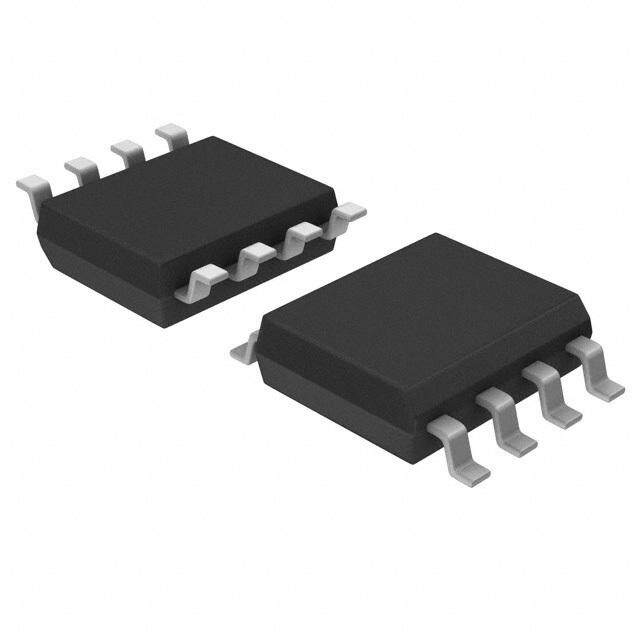

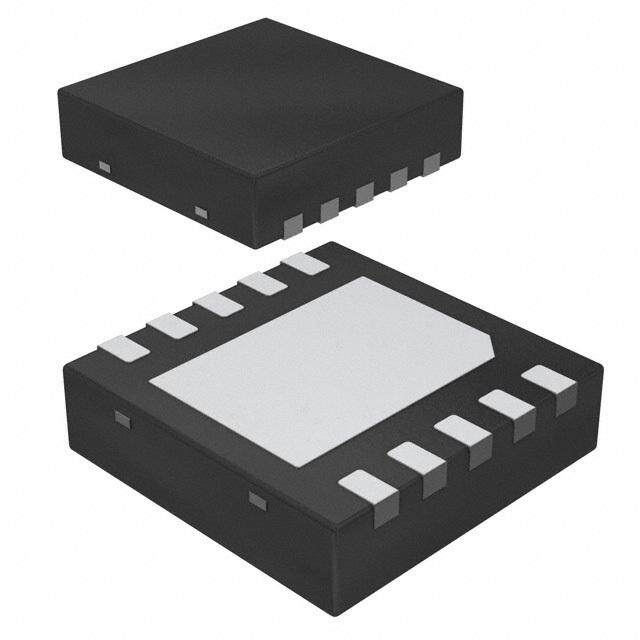


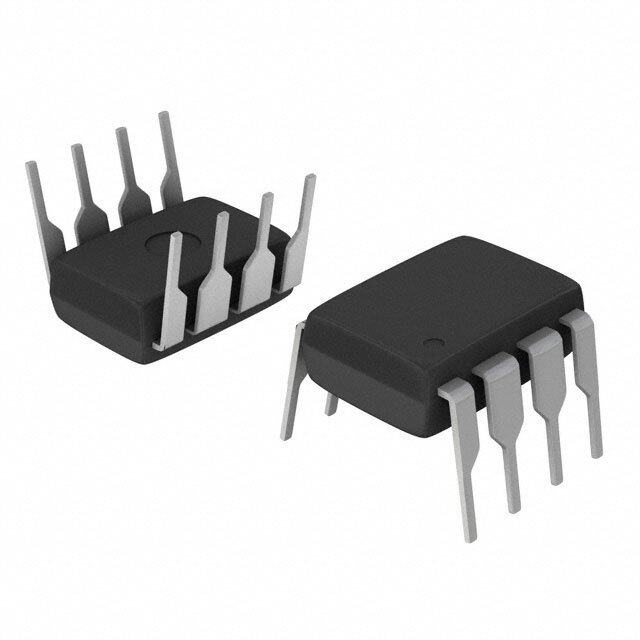

- 商务部:美国ITC正式对集成电路等产品启动337调查
- 曝三星4nm工艺存在良率问题 高通将骁龙8 Gen1或转产台积电
- 太阳诱电将投资9.5亿元在常州建新厂生产MLCC 预计2023年完工
- 英特尔发布欧洲新工厂建设计划 深化IDM 2.0 战略
- 台积电先进制程称霸业界 有大客户加持明年业绩稳了
- 达到5530亿美元!SIA预计今年全球半导体销售额将创下新高
- 英特尔拟将自动驾驶子公司Mobileye上市 估值或超500亿美元
- 三星加码芯片和SET,合并消费电子和移动部门,撤换高东真等 CEO
- 三星电子宣布重大人事变动 还合并消费电子和移动部门
- 海关总署:前11个月进口集成电路产品价值2.52万亿元 增长14.8%

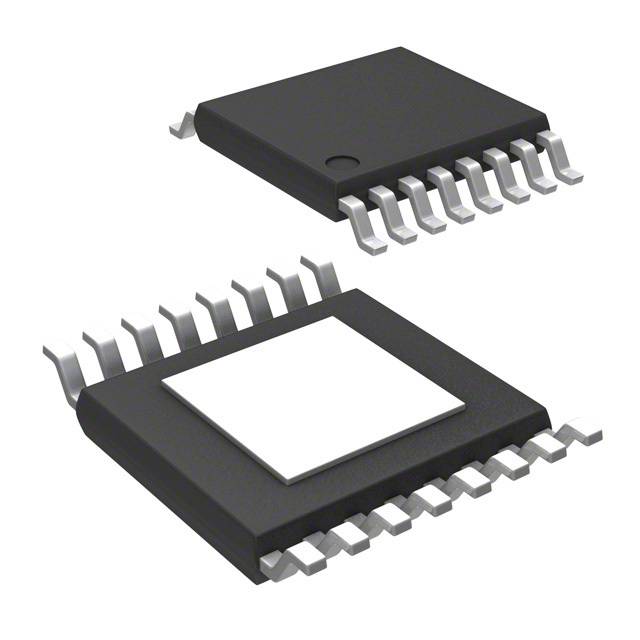

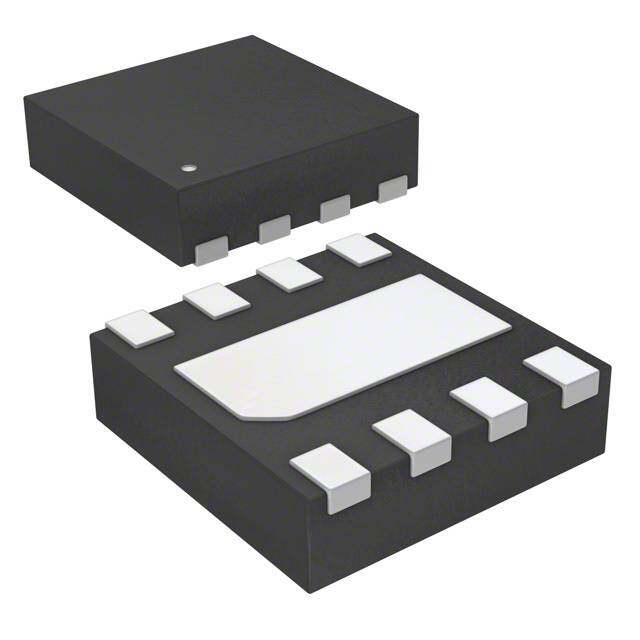
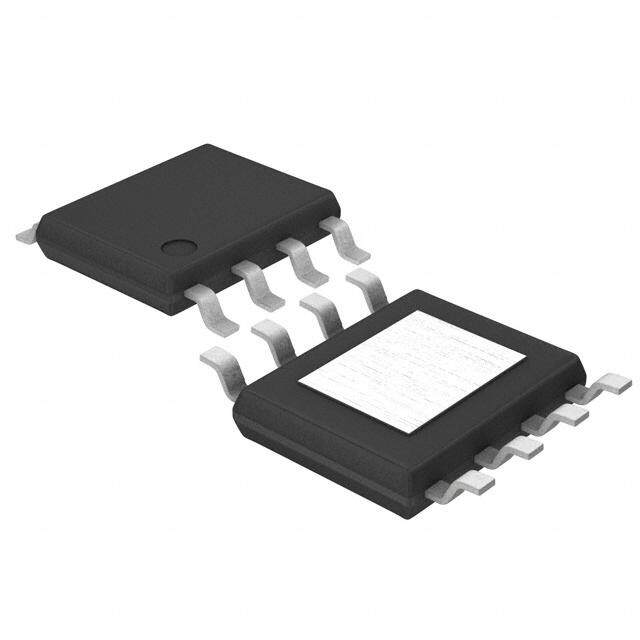

PDF Datasheet 数据手册内容提取
Product Sample & Technical Tools & Support & Folder Buy Documents Software Community TPS61086 SLVSA05B–AUGUST2009–REVISEDAUGUST2015 TPS61086 18.5-V PFM – PWM Step-Up DC – DC Converter With 2.0-A Switch 1 Features 1 • 2.3-Vto6.0-VInputVoltageRange 3 Description • 18.5-VBoostConverterWith2.0-ASwitchCurrent The TPS61086 device is a high-frequency, high- efficiency DC-to-DC converter with an integrated 2.0- • 1.2-MHzSwitchingFrequency A, 0.13-Ω power switch capable of providing an • PowerSaveModeforImprovedEfficiencyatLow- output voltage up to 18.5 V. The implemented boost OutputPowerorForcedPWM converter is based on a fixed frequency of 1.2-MHz, • AdjustableSoft-Start pulse-width-modulation (PWM) controller that allows the use of small external inductors and capacitors • ThermalShutdown andprovidesfasttransientresponse. • UndervoltageLockout At light-load, the device can operate in Power Save • 10-PinVSONPackage Mode with pulse-frequency-modulation (PFM) to improve the efficiency while keeping a low-output 2 Applications voltage ripple. For very noise-sensitive applications, • HandheldDevices the device can be forced to PWM Mode operation over the entire load range by pulling the MODE pin • GPSReceivers high. The external compensation allows optimizing • DigitalStillCameras the application for specific conditions. A capacitor • PortableApplications connected to the soft-start pin minimizes inrush • DSLModems currentatstart-up. • PCMCIACards DeviceInformation(1) • TFTLCDBiasSupply PARTNUMBER PACKAGE BODYSIZE(NOM) TPS61086 VSON(10) 3.00mm×3.00mm (1) For all available packages, see the orderable addendum at theendofthedatasheet. SimplifiedSchematic L 3.3mH VIN D VS PMEG2010AEH 2.5 V to 6 V 8 6 12 V IN SW Cby 1mF Cin 16 V 3 7 R1 Cout 10mF EN SW 156 kW 2* 10mF 16 V 25 V 9 2 MODE FB R2 18 kW 4 1 AGND COMP Rcomp 5 10 68 kW PGND SS Ccomp TPS61086 Css 820 pF 100 nF 1 An IMPORTANT NOTICE at the end of this data sheet addresses availability, warranty, changes, use in safety-critical applications, intellectualpropertymattersandotherimportantdisclaimers.PRODUCTIONDATA.
TPS61086 SLVSA05B–AUGUST2009–REVISEDAUGUST2015 www.ti.com Table of Contents 1 Features.................................................................. 1 7.4 DeviceFunctionalModes..........................................9 2 Applications........................................................... 1 8 ApplicationandImplementation........................ 10 3 Description............................................................. 1 8.1 ApplicationInformation............................................10 4 RevisionHistory..................................................... 2 8.2 TypicalApplications................................................10 8.3 SystemExamples...................................................18 5 PinConfigurationandFunctions......................... 3 9 PowerSupplyRecommendations...................... 21 6 Specifications......................................................... 4 10 Layout................................................................... 21 6.1 AbsoluteMaximumRatings......................................4 6.2 ESDRatings..............................................................4 10.1 LayoutGuidelines.................................................21 6.3 RecommendedOperatingConditions.......................4 10.2 LayoutExample....................................................21 6.4 ThermalInformation..................................................4 11 DeviceandDocumentationSupport................. 22 6.5 ElectricalCharacteristics...........................................5 11.1 CommunityResources..........................................22 6.6 TypicalCharacteristics..............................................6 11.2 Trademarks...........................................................22 7 DetailedDescription.............................................. 8 11.3 ElectrostaticDischargeCaution............................22 7.1 Overview...................................................................8 11.4 Glossary................................................................22 7.2 FunctionalBlockDiagram.........................................8 12 Mechanical,Packaging,andOrderable Information........................................................... 22 7.3 FeatureDescription...................................................8 4 Revision History NOTE:Pagenumbersforpreviousrevisionsmaydifferfrompagenumbersinthecurrentversion. ChangesfromRevisionA(June2015)toRevisionB Page • Changed"FREQ"to"MODE"inAbsoluteMaximumRatingstable ...................................................................................... 4 • Changed"mA"to"A"inX-axislabelforFigure4 .................................................................................................................. 6 • ChangedV from"12V/50mA"to"12V/500mA"inFigure7. ............................................................................................ 10 S ChangesfromOriginal(August2009)toRevisionA Page • AddedPinConfigurationandFunctionssection,ESDRatingstable,FeatureDescriptionsection,DeviceFunctional Modes,ApplicationandImplementationsection,PowerSupplyRecommendationssection,Layoutsection,Device andDocumentationSupportsection,andMechanical,Packaging,andOrderableInformationsection .............................. 1 • DeletedOrderingInformationtable ....................................................................................................................................... 1 2 SubmitDocumentationFeedback Copyright©2009–2015,TexasInstrumentsIncorporated ProductFolderLinks:TPS61086
TPS61086 www.ti.com SLVSA05B–AUGUST2009–REVISEDAUGUST2015 5 Pin Configuration and Functions DRCPackage 10-PinVSON TopView COMP SS FB MODE Thermal EN Pad IN AGND SW PGND SW PinFunctions PIN I/O DESCRIPTION NAME NO. COMP 1 I/O Compensationpin FB 2 I Feedbackpin EN 3 I Shutdowncontrolinput.Connectthispintologichighleveltoenablethedevice 4 AGND — Analogground ThermalPad PGND 5 — Powerground 6 SW — Switchpin 7 IN 8 — Inputsupplypin 9 Operatingmodeselectionpin.MODE='high'forforcedPWMoperation.MODE='low'forPFM MODE I operation SS 10 — Soft-startcontrolpin.Connectacapacitortothispinifsoft-startneeded.Open=nosoft-start Copyright©2009–2015,TexasInstrumentsIncorporated SubmitDocumentationFeedback 3 ProductFolderLinks:TPS61086
TPS61086 SLVSA05B–AUGUST2009–REVISEDAUGUST2015 www.ti.com 6 Specifications 6.1 Absolute Maximum Ratings overoperatingfree-airtemperaturerange(unlessotherwisenoted)(1) MIN MAX UNIT InputvoltageIN(2) –0.3 7 V VoltageonpinsEN,FB,SS,MODE,COMP –0.3 7 V VoltageonpinSW –0.3 20 V Operatingjunctiontemperature –40 150 °C Storagetemperature –65 150 °C (1) StressesbeyondthoselistedunderAbsoluteMaximumRatingsmaycausepermanentdamagetothedevice.Thesearestressratings only,andfunctionaloperationofthedeviceattheseoranyotherconditionsbeyondthoseindicatedunderRecommendedOperating Conditionsisnotimplied.Exposuretoabsolute-maximum-ratedconditionsforextendedperiodsmayaffectdevicereliability (2) Allvoltagevaluesarewithrespecttonetworkgroundterminal. 6.2 ESD Ratings VALUE UNIT Humanbodymodel(HBM),perANSI/ESDA/JEDECJS-001(1) ±2000 V Electrostaticdischarge Charged-devicemodel(CDM),perJEDECspecificationJESD22-C101(2) ±500 V (ESD) MachineModel ±200 (1) JEDECdocumentJEP155statesthat500-VHBMallowssafemanufacturingwithastandardESDcontrolprocess.Pinslistedas±2000 Vmayactuallyhavehigherperformance. (2) JEDECdocumentJEP157statesthat250-VCDMallowssafemanufacturingwithastandardESDcontrolprocess.Pinslistedas±500V mayactuallyhavehigherperformance. 6.3 Recommended Operating Conditions MIN MAX UNIT V Inputvoltage 2.3 6 V IN V Boostoutputvoltage V +0.5 18.5 V S IN T Operatingfree-airtemperature –40 85 °C A T Operatingjunctiontemperature –40 125 °C J 6.4 Thermal Information TPS61086 THERMALMETRIC(1) DRC(VSON) UNIT 10PINS R Junction-to-ambientthermalresistance 54.7 °C/W θJA R Junction-to-case(top)thermalresistance 67.2 °C/W θJC(top) R Junction-to-boardthermalresistance 29.6 °C/W θJB ψ Junction-to-topcharacterizationparameter 2.3 °C/W JT ψ Junction-to-boardcharacterizationparameter 29.8 °C/W JB R Junction-to-case(bottom)thermalresistance 15.6 °C/W θJC(bot) (1) Formoreinformationabouttraditionalandnewthermalmetrics,seetheSemiconductorandICPackageThermalMetricsapplication report,SPRA953. 4 SubmitDocumentationFeedback Copyright©2009–2015,TexasInstrumentsIncorporated ProductFolderLinks:TPS61086
TPS61086 www.ti.com SLVSA05B–AUGUST2009–REVISEDAUGUST2015 6.5 Electrical Characteristics V =3.3V,EN=IN,V =12V,T =–40°Cto85°C,typicalvaluesareatT =25°C(unlessotherwisenoted) IN S A A PARAMETER TESTCONDITIONS MIN TYP MAX UNIT SUPPLY V Inputvoltagerange 2.3 6 V IN I OperatingquiescentcurrentintoIN Devicenotswitching,V =1.3V 75 100 μA Q FB I ShutdowncurrentintoIN EN=GND 1 μA SDVIN V Undervoltagelockoutthreshold V falling 2.2 V UVLO IN V rising 2.3 V IN T Thermalshutdown Temperaturerising 150 °C SD T Thermalshutdownhysteresis 14 °C SDHYS LOGICSIGNALSEN,FREQ V Highlevelinputvoltage V =2.3Vto6V 2 V IH IN V Lowlevelinputvoltage V =2.3Vto6V 0.5 V IL IN I Inputleakagecurrent EN=GND 0.1 μA INLEAK BOOSTCONVERTER V Boostoutputvoltage V +0.5 18.5 V S IN V Feedbackregulationvoltage 1.23 1.238 1.246 V FB gm Transconductanceerroramplifier 107 μA/V I Feedbackinputbiascurrent V =1.238V 0.1 μA FB FB r N-channelMOSFETon-resistance V =V =5V,I =current 0.13 0.2 DS(on) IN GS SW limit Ω V =V =3.3V,I =current 0.16 0.23 IN GS SW limit I SWleakagecurrent EN=GND,V =6V 10 μA SWLEAK SW I N-channelMOSFETcurrentlimit 2 2.6 3.2 A LIM I Soft-startcurrent V =1.238V 7 10 13 μA SS SS f Oscillatorfrequency 0.9 1.2 1.5 MHz S Lineregulation V =2.3Vto6V,I =10mA 0.0002 %/V IN OUT Loadregulation V =3.3V,I =1mAto400 0.11 IN OUT %/A mA Copyright©2009–2015,TexasInstrumentsIncorporated SubmitDocumentationFeedback 5 ProductFolderLinks:TPS61086
TPS61086 SLVSA05B–AUGUST2009–REVISEDAUGUST2015 www.ti.com 6.6 Typical Characteristics ThetypicalcharacteristicsaremeasuredwiththeinductorCDRH6D123.3µHfromSumidaandtherectifierdiodeSL22. Table1.TableofGraphs FIGURE η EfficiencyvsLoadcurrent-PFM V =3.3V,V =9V,12V,15V Figure1 IN S η EfficiencyvsLoadcurrent-ForcedPWM V =3.3V,V =9V,12V,15V Figure2 IN S I Maximumoutputcurrent Figure3 out(max) f Switchingfrequency-ForcedPWM vsLoadcurrent,V =3.3V,V =12V Figure4 S IN S f Switchingfrequency-ForcedPWM vsSupplyvoltage,V =12V,I =200mA Figure5 S S out Supplycurrent vsSupplyvoltage,V =3.3V,V =12V Figure6 IN S 100 100 VS= 9 V VS= 9 V 90 90 80 80 % 70 VS= 15 V VS= 12 V % 70 VS= 15 V VS= 12 V y - 60 y - 60 nc 50 nc 50 e e ci ci Effi 40 Effi 40 30 30 FREQ = GND FREQ = VIN 20 20 VIN= 3.3 V VIN= 3.3 V 10 L= 3.3 µH 10 L= 3.3 µH 0 0 0.1 1 10 100 1000 1 10 100 1000 IO- Output Current - mA IO- Output Current - mA Figure1.PFMModeEfficiencyvsOutputCurrent Figure2.ForcePWMModeEfficiencyvsOutputCurrent 1.6 1600 MODE = V IN 1.4 VS= 9 V 1400 FLo=r c3e.3d µPHWM A 1.2 VS= 12 V 1200 I- Output current -O 1000....0846 VS= 15 V f - Frequency - kHz 1468000000000 V = 3.3 V VS= 18.5 V 200 VIN= 12 V 0.2 S L= 3.3 µH 0.02.5 3.0 3.5 4.0 4.5 5.0 5.5 6.0 0 0.1 0.2 0.3 0.4 0.5 0.6 VIN- Supply voltage - V IO- Load current -A Figure3.OutputCurrentvsSupplyVoltage Figure4.FrequencyvsLoadCurrent 6 SubmitDocumentationFeedback Copyright©2009–2015,TexasInstrumentsIncorporated ProductFolderLinks:TPS61086
TPS61086 www.ti.com SLVSA05B–AUGUST2009–REVISEDAUGUST2015 1400 2.5 1200 2.0 1000 MFoOrDceEd = P VWINM mA MODE = VIN f - Frequency - kHz 468000000 L= 3.3 µH I- Supply Current - CC 011...550 Forced PWM M(POFDME) = GND 200 V = 3.3 V VS= 12 V / 200 mA VISN= 12 V/50 mA 0 0 2.5 3.0 3.5 4.0 4.5 5.0 5.5 6.0 2.0 2.5 3.0 3.5 4.0 4.5 5.0 5.5 6.0 VCC- Supply Voltage - V VCC- Supply Voltage - V Figure5.FrequencyvsSupplyVoltage Figure6.SupplyCurrentvsSupplyVoltage Copyright©2009–2015,TexasInstrumentsIncorporated SubmitDocumentationFeedback 7 ProductFolderLinks:TPS61086
TPS61086 SLVSA05B–AUGUST2009–REVISEDAUGUST2015 www.ti.com 7 Detailed Description 7.1 Overview The boost converter is designed for output voltages up to 18.5 V with a switch peak current limit of 2.0 A minimum. The device, which operates in a current mode scheme with quasi-constant frequency, is externally compensated for maximum flexibility and stability. The switching frequency is fixed to 1.2 MHz and the minimum inputvoltageis2.3V.Tolimittheinrushcurrentatstart-upasoft-startpinisavailable. TPS61086 boost converter’s novel topology using adaptive OFF-time provides superior load and line transient responsesandoperatesalsooverawiderrangeofapplicationsthanconventionalconverters. 7.2 Functional Block Diagram VIN VS EN IN MODE SW SW SS Current limit and Soft Start Toff Generator AGND Bias Vref=1.24V UVLO Thermal Shutdown Ton Gate Driver of PWM Power Generator Transistor COMP GMAmplifier FB Vref PGND 7.3 Feature Description 7.3.1 Soft-Start The boost converter has an adjustable soft-start to prevent high inrush current during start-up. To minimize the inrush current during start-up an external capacitor, connected to the soft-start pin SS and charged with a constant current, is used to slowly ramp up the internal current limit of the boost converter. When the EN pin is pulled high, the soft-start capacitor C is immediately charged to 0.3 V. The capacitor is then charged at a SS constant current of 10 μA typically until the output of the boost converter V has reached its Power Good S threshold (90% of V nominal value). During this time, the SS voltage directly controls the peak inductor current, S starting with 0 A at V = 0.3 V up to the full current limit at V ≈ 800 mV. The maximum load current is SS SS availableafterthesoft-startiscompleted.Thelargerthecapacitortheslowertherampofthecurrentlimitandthe longer the soft-start time. A 100 nF capacitor is usually sufficient for most of the applications. When the EN pin is pulledlow,thesoft-startcapacitorisdischargedtoground. 8 SubmitDocumentationFeedback Copyright©2009–2015,TexasInstrumentsIncorporated ProductFolderLinks:TPS61086
TPS61086 www.ti.com SLVSA05B–AUGUST2009–REVISEDAUGUST2015 Feature Description (continued) 7.3.2 UndervoltageLockout(UVLO) To avoid mis-operation of the device at low input voltages an undervoltage lockout is included that disables the device,iftheinputvoltagefallsbelow2.2V. 7.3.3 ThermalShutdown A thermal shutdown is implemented to prevent damages due to excessive heat and power dissipation. Typically the thermal shutdown happens at a junction temperature of 150°C. When the thermal shutdown is triggered the device stops switching until the junction temperature falls below typically 136°C. Then the device starts switching again. 7.3.4 OvervoltagePrevention If overvoltage is detected on the FB pin (typically 3% above the nominal value of 1.238 V) the part stops switching immediately until the voltage on this pin drops to its nominal value. This prevents overvoltage on the outputandsecuresthecircuitsconnectedtotheoutputfromexcessiveovervoltage. 7.4 Device Functional Modes 7.4.1 PowerSaveMode Connecting the MODE pin to GND (or any low logic level) enables the Power Save Mode operation. The converter operates in quasi fixed frequency PWM (Pulse Width Modulation) mode at moderate to heavy load and in the PFM (Pulse Frequency Modulation) mode during light loads, which maintains high efficiency over a wide loadcurrentrange. In PFM mode the converter is skipping switch pulses. However, within a PFM pulse, the switching frequency is still fixed to 1.2 MHz typically and the duty cycle determined by the input and output voltage. Therefore, the inductor peak current will remain constant for a defined application. With an increasing output load current, the PFM pulses become closer and closer (the PFM mode frequency gets higher) until no pulse is skipped anymore: thedeviceoperatestheninCCM(ContinuousConductionMode)withnormalPWMmode. The PFM mode frequency (between each PFM pulse) depends on the load current, the external components like theinductorortheoutputcapacitorvaluesaswellastheoutputvoltage.ThedeviceentersPowerSaveModeas the inductor peak current falls below a 0.6A typically and switches until V is 1% higher than its nominal value. S The converter stops switching when V = V + 0.5%. The output voltage will thenrefore oscillate between 0.5% S S and1%morethanitsnominalvaluewhichwillprovideexcellenttransientresponsetosuddenloadchange,since theoutputvoltagedropwillbereducedduetothisslightpositiveoffset(seeFigure12). 7.4.2 ForcedPWMMode Pulling the MODE pin high forces the converter to operate in a continuous PWM mode evan at light load currents. The advantage is that the converter operates with a quai constant frequency that allows simple filtering of the swithcing frequency for noise-sensitive applications. In this mode and at light load, the efficiency is lower comparedtothePowerSaveMode. For additional flexibility, it is possible to switch from Power Save Mode to Forced PWM Mode during operation. This allows efficient power management by adjusting the operation of the converter to the specific system requirements. Copyright©2009–2015,TexasInstrumentsIncorporated SubmitDocumentationFeedback 9 ProductFolderLinks:TPS61086
TPS61086 SLVSA05B–AUGUST2009–REVISEDAUGUST2015 www.ti.com 8 Application and Implementation NOTE Information in the following applications sections is not part of the TI component specification, and TI does not warrant its accuracy or completeness. TI’s customers are responsible for determining suitability of components for their purposes. Customers should validateandtesttheirdesignimplementationtoconfirmsystemfunctionality. 8.1 Application Information The TPS61086 is designed for output voltages up to 18.5 V with a switch peak current limit of 2.0 A minimum. The device, which operates in a current mode scheme with quasi-constant frequency, is externally compensated for maximum flexibility and stability. The switching frequency is fixed to 1.2 MHz and the minimum input voltage is2.3V.Tolimittheinrushcurrentatstart-up,asoft-startpinisavailable. TPS61086 boost converter's novel topology using adaptive off-time provides superior load and line transient responsesandoperatesalsooverawiderrangeofapplicationsthanconventionalconverters. 8.2 Typical Applications 8.2.1 3.3-Vto12-VBoostConverterWithPFMModeatLightLoad L 3.3 µH V D VS IN PMEG2010AEH 12 V/500 mA 3.3 V ± 20% 8 6 IN SW Cby 1 µF Cin 16 V 3 7 R1 Cout 10 µF EN SW 156 kΩ 2*10 µF 16 V 25 V 9 2 MODE FB R2 18 kΩ 4 1 AGND COMP Rcomp 5 10 68kΩ PGND SS Ccomp TPS61086 Css 1.2 nF 100 nF Figure7. TypicalApplication,3.3Vto12V(PFMMode) 8.2.1.1 DesignRequirements Forthisexample,thedesignparametersarelistedinTable2. Table2.DesignParameters DESIGNPARAMETERS EXAMPLEVALUES InputVoltage 3.3V±20% OutputVoltage 12V OutputCurrent 500mA OperationModeatLightLoad PFM 10 SubmitDocumentationFeedback Copyright©2009–2015,TexasInstrumentsIncorporated ProductFolderLinks:TPS61086
TPS61086 www.ti.com SLVSA05B–AUGUST2009–REVISEDAUGUST2015 8.2.1.2 DetailedDesignProcedure Thefirststepinthedesignprocedureistoverifythatthemaximumpossibleoutputcurrentoftheboostconverter supports the specific application requirements. A simple approach is to estimate the converter efficiency, by taking the efficiency numbers from the provided efficiency curves or to use a worst case assumption for the expectedefficiency,forexample,90%. 1. Dutycycle,D: V ×h D=1- IN V S (1) 2. Maximumoutputcurrent,I : out(max) Iout(max) =æçèILIM(min)-D2IL ö÷ø×(1-D) (2) 3. Peakswitchcurrentinapplication,I : swpeak DI I I = L + out swpeak 2 1-D (3) withtheinductorpeak-to-peakripplecurrent,ΔI L V ×D DI = IN L f ×L S where • V isMinimuminputvoltage. IN • V isOutputvoltage. S • I isConverterswitchcurrentlimit(minimumswitchcurrentlimit=2.0A). LIM(min) • f isConverterswitchingfrequency(typically1.2MHz). S • LisSelectedinductorvalue. • ηisEstimatedconverterefficiency(pleaseusethenumberfromtheefficiencyplotsor90%asanestimation. (4) The peak switch current is the steady-state peak switch current that the integrated switch, inductor and external Schottky diode has to be able to handle. The calculation must be done for the minimum input voltage where the peakswitchcurrentisthehighest. 8.2.1.2.1 InductorSelection The TPS61086 is designed to work with a wide range of inductors. The main parameter for the inductor selection is the saturation current of the inductor which should be higher than the peak switch current as calculated in the Detailed Design Procedure section with additional margin to cover for heavy load transients. An alternative, more conservative, is to choose an inductor with a saturation current at least as high as the maximum switch current limit of 3.2 A. The other important parameter is the inductor DC resistance. Usually the lower the DC resistance thehighertheefficiency. NOTE The inductor DC resistance is not the only parameter determining the efficiency. Especially for a boost converter where the inductor is the energy storage element, the typeandcorematerialoftheinductorinfluencestheefficiencyaswell. Usually an inductor with a larger form factor gives higher efficiency. The efficiency difference between different inductors can vary between 2% to 10%. For the TPS61086, inductor values between 3 μH and 6 μH are a good choice.PossibleinductorsareshowninTable3. Typically, TI recommends that the inductor current ripple is below 35% of the average inductor current. The followingequationcanthereforebeusedtocalculatetheinductorvalue, L: Copyright©2009–2015,TexasInstrumentsIncorporated SubmitDocumentationFeedback 11 ProductFolderLinks:TPS61086
TPS61086 SLVSA05B–AUGUST2009–REVISEDAUGUST2015 www.ti.com 2 æV ö æV -V ö æ h ö L = çèVISN ÷ø ×çèIoSut× fINS ÷ø×çè0.35÷ø where • V isMinimuminputvoltage. IN • V isOutputvoltage. S • I isMaximumoutputcurrentintheapplication. out • f isConverterswitchingfrequency(typically1.2MHz). S • ηisEstimatedconverterefficiency(pleaseusethenumberfromtheefficiencyplotsor90%asanestimation. (5) Table3.InductorSelection L COMPONENT SIZE DCRTYP SUPPLIER I (A) (μH) CODE (L×W×Hmm) (mΩ) sat 3.3 Sumida CDH38D09 4x4x1 240 1.25 4.7 Sumida CDPH36D13 5x5x1.5 155 1.36 3.3 Sumida CDPH4D19F 5.2x5.2x2 33 1.5 3.3 Sumida CDRH6D12 6.7x6.7x1.5 62 2.2 4.7 WürthElektronik 7447785004 5.9x6.2x3.3 60 2.5 5 Coilcraft MSS7341 7.3x7.3x4.1 24 2.9 8.2.1.2.2 RectifierDiodeSelection To achieve high efficiency a Schottky type should be used for the rectifier diode. The reverse voltage rating should be higher than the maximum output voltage of the converter. The averaged rectified forward current I , avg theSchottkydiodeneedstoberatedfor,isequaltotheoutputcurrent I : out I = I avg out (6) Usually a Schottky diode with 1-A maximum average rectified forward current rating is sufficient for most applications. The Schottky rectifier can be selected with lower forward current capability depending on the output current I but has to be able to dissipate the power. The dissipated power, P , is the average rectified forward out D currenttimesthediodeforwardvoltage, V . forward P =I ×V D avg forward (7) Typically the diode should be able to dissipate around 500 mW depending on the load current and forward voltage. Table4.RectifierDiodeSelection CURRENT COMPONENT PACKAGE V V /I SUPPLIER RATINGI r forward avg CODE TYPE avg 750mA 20V 0.425V/1A FairchildSemiconductor FYV0704S SOT23 1A 20V 0.39V/1A NXP PMEG2010AEH SOD123 1A 20V 0.5V/1A VishaySemiconductor SS12 SMA 1A 20V 0.44V/1A VishaySemiconductor MSS1P2L µ-SMP 2A 20V 0.44V/2A VishaySemiconductor SL22 SMB 12 SubmitDocumentationFeedback Copyright©2009–2015,TexasInstrumentsIncorporated ProductFolderLinks:TPS61086
TPS61086 www.ti.com SLVSA05B–AUGUST2009–REVISEDAUGUST2015 8.2.1.2.3 SettingtheOutputVoltage The output voltage is set by an external resistor divider. Typically, a minimum current of 50 μA flowing through the feedback divider gives good accuracy and noise covering. A standard low side resistor of 18 kΩ is typically selected.Theresistorsarethencalculatedas: V S V æ V ö R2= FB »18kW R1=R2×ç S -1÷ 70mA èVFB ø R1 V FB V =1.238V R2 FB (8) 8.2.1.2.4 Compensation(COMP) The regulator loop can be compensated by adjusting the external components connected to the COMP pin. The COMPpinistheoutputoftheinternaltransconductanceerroramplifier. Standardvaluesof R =16kΩ andC =2.7nF willworkforthemajorityoftheapplications. COMP COMP Please refer to Table 5 for dedicated compensation networks giving an improved load transient response. The followingequationscanbeusedtocalculateR andC : COMP COMP R = 110×VIN ×VS ×Cout C = Vs×Cout COMP L×I COMP 7.5×I ×R out out COMP where • V isMinimuminputvoltage. IN • V isOutputvoltage. S • C isOutputcapacitance. out • LisInductorvalue,forexample,3.3μHor4.7μH. • I isMaximumoutputcurrentintheapplication. (9) out MakesurethatR <120kΩ andC >820pF,independentoftheresultsoftheaboveformulas. COMP COMP Table5.RecommendedCompensationNetworkValuesatHigh/LowFrequency L V V ±20% R C S IN COMP COMP 5V 100kΩ 820pF 15V 3.3V 91kΩ 1.2nF 5V 68kΩ 820pF 3.3μH 12V 3.3V 68kΩ 1.2nF 5V 39kΩ 820pF 9V 3.3V 39kΩ 1.2nF Table 5 gives conservative R and C values for certain inductors, input and output voltages providing a COMP COMP very stable system. For a faster response time, a higher R value can be used to enlarge the bandwidth, as COMP well as a slightly lower value of C to keep enough phase margin. These adjustments should be performed in COMP parallelwiththeloadtransientresponsemonitoringofTPS61086. 8.2.1.2.5 InputCapacitorSelection For good input voltage filtering low-ESR ceramic capacitors are recommended. TPS61086 has an analog input IN.Therefore,a1-μFbypassishighlyrecommendedascloseaspossibletotheICfromINtoGND. One 10-μF ceramic input capacitors are sufficient for most of the applications. For better input voltage filtering thisvaluecanbeincreased.RefertoTable6andtypicalapplicationsforinputcapacitorrecommendation Copyright©2009–2015,TexasInstrumentsIncorporated SubmitDocumentationFeedback 13 ProductFolderLinks:TPS61086
TPS61086 SLVSA05B–AUGUST2009–REVISEDAUGUST2015 www.ti.com 8.2.1.2.6 OutputCapacitorSelection For best output voltage filtering a low-ESR output capacitor like ceramic capcaitor is recommended. Two to four 10-μF ceramic output capacitors (or two 22 μF) work for most of the applications. Higher capacitor values can be usedtoimprovetheloadtransientresponse.RefertoTable6fortheselectionoftheoutputcapacitor. Table6.RectifierInputandOutputCapacitorSelection CAPACITOR/SI VOLTAGERATING SUPPLIER COMPONENTCODE ZE C 22μF/1206 16V TaiyoYuden EMK316BJ226ML IN INbypass 1μF/0603 16V TaiyoYuden EMK107BJ105KA C 10μF/1206 25V TaiyoYuden TMK316BJ106KL OUT Tocalculatetheoutputvoltageripple,thefollowingequationcanbeused: V -V I DV = S IN × out DV =I ×R C V × f C C_ESR L(peak) C_ESR S S out where • ΔV isOutputvoltagerippledependentonoutputcapacitance,outputcurrentandswitchingfrequency. C • V isOutputvoltage. S • V isMinimuminputvoltageofboostconverter. IN • f isConverterswitchingfrequency(typically1.2MHz). S • I isOutputcapacitance. out • ΔV isOutputvoltagerippleduetooutputcapacitorsESR(equivalentseriesresistance). C_ESR • I isInductorpeakswitchcurrentintheapplication. SWPEAK • R isOutputcapacitorsequivalentseriesresistance(ESR). (10) C_ESR ΔV canbeneglectedinmanycasessinceceramiccapacitorsprovideverylowESR. C_ESR 8.2.1.3 ApplicationCurves VSW VSW 5 V/div 5 V/div VS_AC VS_AC 50 mV/div 50 mV/div Il Il 0.5A/div 0.5A/div VIN= 3.3 V, VS= 12 V/50 mA VIN= 3.3 V, VS= 12 V/50 mA 10 µs/div 10 µs/div Figure8.PFMModeSwitchingPulse Figure9.PFMModeSwitchingPulses 14 SubmitDocumentationFeedback Copyright©2009–2015,TexasInstrumentsIncorporated ProductFolderLinks:TPS61086
TPS61086 www.ti.com SLVSA05B–AUGUST2009–REVISEDAUGUST2015 VSW VSW 10 V/div 10 V/div VS_AC VS_AC 50 mV/div 50 mV/div Il Il 0.5A/div 1A/div VIN= 3.3 V VS= 12 V/300 mA VIN= 3.3 V, VS= 12 V/4 mA 100 µs/div 400 ns/div Figure10.PFMMode-LightLoad Figure11.ForcedPWM/PFMMode-HeavyLoad VS_AC VIN 50 mV/div 2V/div COUT= 40 µF Rcomp= 16 kΩ L= 3.3 µH Ccomp= 2.7 nF COUT= 40 µF L= 3.3 µH Rcomp= 16 kΩ Ccomp= 2.7 nF IOUT 200 mVVS_/dAiCv 50mA/div VIN= 3.3 V VIN= 2.3 V - 6.0V VS= 12 V/50 mA- 150 mA VS= 12 V/0 mA 400 µs/div 400 µs/div Figure12.LoadTransientResponsePFMMode Figure13.LineTransientResponseLightLoad VIN= 3.3 V VS= 12 V / 300 mA EN 5 V/div VS 5 V/div IL CSS= 100 nF 1A/div 2 ms/div Figure14.Soft-Start Copyright©2009–2015,TexasInstrumentsIncorporated SubmitDocumentationFeedback 15 ProductFolderLinks:TPS61086
TPS61086 SLVSA05B–AUGUST2009–REVISEDAUGUST2015 www.ti.com 8.2.2 3.3-Vto12-VBoostConverterWithForcedPWMModeatLightLoad L 3.3 µH VIN D VS 3.3 V ± 20% 8 6 PMEG2010AEH 12 V/500 mAmax. IN SW Cby 1 µF Cin 16 V 3 7 R1 Cout 10 µF EN SW 156 kΩ 10 µF 16 V 25 V 9 2 MODE FB R2 18 kΩ 4 1 AGND COMP Rcomp 5 10 68kΩ PGND SS Ccomp TPS61086 Css 1.2 nF 100 nF Figure15. TypicalApplication,3.3Vto12V(ForcePWMMode) 8.2.2.1 DesignRequirements Forthisexample,thedesignparametersarelistedinTable7. Table7.DesignParameters DESIGNPARAMETERS EXAMPLEVALUES InputVoltage 3.3V±20% OutputVoltage 12V OutputCurrent 500mA OperationModeatLightLoad ForcedPWM 16 SubmitDocumentationFeedback Copyright©2009–2015,TexasInstrumentsIncorporated ProductFolderLinks:TPS61086
TPS61086 www.ti.com SLVSA05B–AUGUST2009–REVISEDAUGUST2015 8.2.2.2 DetailedDesignProcedure RefertoDetailedDesignProcedureinthe3.3-Vto12-VBoostConverterWithPFMModeatLightLoad section. 8.2.2.3 ApplicationCurves VSW VSW 10 V/div 10 V/div VS_AC VS_AC 50 mV/div 50 mV/div Il Il 0.5A/div 1A/div VIN= 3.3 V VS= 12 V/300 mA VIN= 3.3 V, VS= 12 V/4 mA 100 µs/div 400 ns/div Figure16.ForcedPWMMode-LightLoad Figure17.ForcedPWM/PFMMode-HeavyLoad VS_AC VIN 100 mV/div 2V/div COUT= 40 µF Rcomp= 16 kΩ L= 3.3 µH Ccomp= 2.7 nF COUT= 40 µF L= 3.3 µH Rcomp= 16 kΩ Ccomp= 2.7 nF IOUT 200 mVVS_/dAiCv 50mA/div VIN= 3.3 V VIN= 2.3 V - 6.0V VS= 12 V/50 mA- 150 mA VS= 12 V/150 mA 400 µs/div 400 µs/div Figure18.LoadTransientResponseForcePWMMode Figure19.LineTransientResponseHeavyLoad Copyright©2009–2015,TexasInstrumentsIncorporated SubmitDocumentationFeedback 17 ProductFolderLinks:TPS61086
TPS61086 SLVSA05B–AUGUST2009–REVISEDAUGUST2015 www.ti.com 8.3 System Examples T2 Vgh 3·Vs BC850B 26.5 V / 20 mA C16 -7 VV/2G0L mA BCT8157B -Vs 47500 nVF/ BAVD939 470C n1F8/ R10 50 V 13 kΩ 13C 5µ1 FV3/ 6.8 RkΩ8 4702C 5n1 FV4/ BADV499 C457010 5V nF/ 475C001 n7VF/ BAVD929 470C n1F9/2·Vs D9 13C 5µ2 FV0/ D8 50 V BZX84C27V BZX84C7V5 L 3.3 µH Cby D VIN 11 6µ FV/ SL22 VS 5 V ± 20% 8 6 15 V/500 mA IN SW Cin 3 7 R1 Cout 2*10 µF/ EN SW 200 kΩ 4*10µF/ 16 V 25V 9 2 MODE FB R2 4 1 18 kΩ AGND COMP Rcomp 5 10 100 kΩ PGND SS Ccomp TPS61086 820 pF Css 100 nF Figure20. TypicalApplication5Vto15V(ForcePWMMode)forTFTLCDWithExternalChargePumps (VGH,VGL) Riso 10 kW L 3.3 µH 5 V V±I N20% 1 µCFb/1y6 V8 6 PMEG2D010AEH BC857C 15 VV/5S0 mA IN SW Ciso 2* 10 CµFin/ 3 EN SW 7 1 µF/ 25 V R1 Cout 16 V 200 kΩ 4*10 µF/ 25 V 9 2 MODE FB R2 4 1 18 kΩ Enable AGND COMP Rcomp 5 10 PGND SS 100 kΩ Ccomp TPS61086 Css 820 pF 100 nF Figure21. TypicalApplicationWithExternalLoadDisconnectSwitch 18 SubmitDocumentationFeedback Copyright©2009–2015,TexasInstrumentsIncorporated ProductFolderLinks:TPS61086
TPS61086 www.ti.com SLVSA05B–AUGUST2009–REVISEDAUGUST2015 System Examples (continued) L 3.3 µH D Overvoltage VIN Protection VS PMEG2010AEH 3.3 V ± 20% 15 V/30 mA 8 6 IN SW Cby Dz 1 µF BZX84C 18V Cin 16 V 3 7 R1 Cout 10 µF EN SW 200 kΩ 10 µF 16 V 25 V 9 2 MODE FB Rlimit R2 110Ω 4 1 18 kΩ AGND COMP Rcomp 5 10 91 kΩ PGND SS Ccomp TPS61086 Css 1.2 nF 100 nF Figure22. TypicalApplication,3.3Vto15V(PFMMode)WithOvervoltageProtection L 3.3 µH optional Cby 3.3 VV I±N 20% 1 µF/ 16 V8 6 PMEG2D010AEH BZX84DCz 3SLW3P Ew6L7ECD 300V SmA IN SW 18 V Cin 3 7 Cout 10 µF/ EN SW 2* 10 µF/ 16 V 25 V 9 2 MODE FB Rlimit 4 1 110Ω Rsense AGND COMP 15Ω Rcomp 5 10 68 kΩ PGND SS Ccomp TPS61086 Css 1.2 nF 100 nF Figure23. SimpleApplication(3.3-VInputVoltage-ForcedPWMMode)forwLEDSupply(3S3P)(With OptionalClampingZenerDiode) Copyright©2009–2015,TexasInstrumentsIncorporated SubmitDocumentationFeedback 19 ProductFolderLinks:TPS61086
TPS61086 SLVSA05B–AUGUST2009–REVISEDAUGUST2015 www.ti.com System Examples (continued) L 3.3 µH optional Cby 3.3 VV I±N 20% 1 µF/ 16 V8 6 PMEG2D010AEH BZX84DCz 3SLW3P Ew6L7ECD 300V SmA IN SW 18 V Cin 3 7 Cout 10 µF/ EN SW 2* 10 µF/ 16 V 25 V 9 2 MODE FB Rlimit 4 1 110Ω Rsense AGND COMP 15Ω PWM Rcomp 100 Hz to 500 Hz 5 PGND SS 10 68 kΩ Ccomp TPS61086 Css 1.2 nF 100 nF Figure24. SimpleApplication(3.3-VInputVoltage-ForcedPWMMode)forwLEDSupply(3S3P)With AdjustableBrightnessControlUsingaPWMSignalontheEnablePin(WithOptionalClampingZener Diode) L 3.3 µH optional Cby VIN 1 µF/ 16 V D Dz 3S3PwLED VS 3.3 V ± 20% 8 6 PMEG2010AEH BZX84C LW E67C 300 mA IN SW 18 V Cin 3 7 Cout 10 µF/ EN SW 2* 10 µF/ 16 V 25 V 9 2 R1 Rlimit MODE FB 180 kΩ 110Ω 4 1 Rsense AGND COMP 15Ω R2 Rcomp 5 10 127 kΩ PGND SS 68 kΩ Ccomp TPS61086 1.2 nF Analog Brightness Control Css 3.3 V ~ wLED off 100 nF 0 V ~ l = 30 mA(each string) LED PWM Signal Can be used swinging from 0 V to 3.3 V Figure25. SimpleApplication(3.3-VInputVoltage-ForcedPWMMode)forwLEDSupply(3S3P)With AdjustableBrightnessControlUsinganAnalogSignalontheFeedbackPin(WithOptionalClamping ZenerDiode) 20 SubmitDocumentationFeedback Copyright©2009–2015,TexasInstrumentsIncorporated ProductFolderLinks:TPS61086
TPS61086 www.ti.com SLVSA05B–AUGUST2009–REVISEDAUGUST2015 9 Power Supply Recommendations The TPS61086 is designed to operate from an input voltage supply range between 2.3 V and 6.0 V. The power supply to the TPS61086 needs to have a current rating according to the supply voltage, output voltage, and outputcurrentoftheTPS61086. 10 Layout 10.1 Layout Guidelines For all switching power supplies, the layout is an important step in the design, especially at high peak currents and high switching frequencies. If the layout is not carefully done, the regulator could show stability problems as well as EMI problems. Therefore, use wide and short traces for the main current path and for the power ground tracks. The input capacitor, output capacitor, and the inductor should be placed as close as possible to the IC. Use a common ground node for power ground connecting to the PGND terminal and a different one for control groundconnectingtotheAGNDterminaltominimizetheeffectsofgroundnoise.Connectthesegroundnodesat the PGND terminal of the IC. The most critical current path for all boost converters is from the switching FET, through the rectifier diode, then the output capacitors, and back to ground of the switching FET. Therefore, the output capacitors and their traces should be placed on the same board layer as the IC and as close as possible betweentheIC'sSWandPGNDterminal. 10.2 Layout Example VIN VOUT E D SS MO N SW SW I 0 9 8 7 65 1 TPS61086 GND 1 2 3 4 5 D P B ND N M F EN G O G P C A Figure26. TPS61086LayoutExample Copyright©2009–2015,TexasInstrumentsIncorporated SubmitDocumentationFeedback 21 ProductFolderLinks:TPS61086
TPS61086 SLVSA05B–AUGUST2009–REVISEDAUGUST2015 www.ti.com 11 Device and Documentation Support 11.1 Community Resources The following links connect to TI community resources. Linked contents are provided "AS IS" by the respective contributors. They do not constitute TI specifications and do not necessarily reflect TI's views; see TI's Terms of Use. TIE2E™OnlineCommunity TI'sEngineer-to-Engineer(E2E)Community.Createdtofostercollaboration amongengineers.Ate2e.ti.com,youcanaskquestions,shareknowledge,exploreideasandhelp solveproblemswithfellowengineers. DesignSupport TI'sDesignSupport QuicklyfindhelpfulE2Eforumsalongwithdesignsupporttoolsand contactinformationfortechnicalsupport. 11.2 Trademarks E2EisatrademarkofTexasInstruments. Allothertrademarksarethepropertyoftheirrespectiveowners. 11.3 Electrostatic Discharge Caution Thesedeviceshavelimitedbuilt-inESDprotection.Theleadsshouldbeshortedtogetherorthedeviceplacedinconductivefoam duringstorageorhandlingtopreventelectrostaticdamagetotheMOSgates. 11.4 Glossary SLYZ022—TIGlossary. Thisglossarylistsandexplainsterms,acronyms,anddefinitions. 12 Mechanical, Packaging, and Orderable Information The following pages include mechanical, packaging, and orderable information. This information is the most current data available for the designated devices. This data is subject to change without notice and revision of thisdocument.Forbrowser-basedversionsofthisdatasheet,refertotheleft-handnavigation. 22 SubmitDocumentationFeedback Copyright©2009–2015,TexasInstrumentsIncorporated ProductFolderLinks:TPS61086
PACKAGE OPTION ADDENDUM www.ti.com 6-Feb-2020 PACKAGING INFORMATION Orderable Device Status Package Type Package Pins Package Eco Plan Lead/Ball Finish MSL Peak Temp Op Temp (°C) Device Marking Samples (1) Drawing Qty (2) (6) (3) (4/5) TPS61086DRCR ACTIVE VSON DRC 10 3000 Green (RoHS NIPDAU Level-2-260C-1 YEAR -40 to 85 PSRI & no Sb/Br) TPS61086DRCT ACTIVE VSON DRC 10 250 Green (RoHS NIPDAU Level-2-260C-1 YEAR -40 to 85 PSRI & no Sb/Br) (1) The marketing status values are defined as follows: ACTIVE: Product device recommended for new designs. LIFEBUY: TI has announced that the device will be discontinued, and a lifetime-buy period is in effect. NRND: Not recommended for new designs. Device is in production to support existing customers, but TI does not recommend using this part in a new design. PREVIEW: Device has been announced but is not in production. Samples may or may not be available. OBSOLETE: TI has discontinued the production of the device. (2) RoHS: TI defines "RoHS" to mean semiconductor products that are compliant with the current EU RoHS requirements for all 10 RoHS substances, including the requirement that RoHS substance do not exceed 0.1% by weight in homogeneous materials. Where designed to be soldered at high temperatures, "RoHS" products are suitable for use in specified lead-free processes. TI may reference these types of products as "Pb-Free". RoHS Exempt: TI defines "RoHS Exempt" to mean products that contain lead but are compliant with EU RoHS pursuant to a specific EU RoHS exemption. Green: TI defines "Green" to mean the content of Chlorine (Cl) and Bromine (Br) based flame retardants meet JS709B low halogen requirements of <=1000ppm threshold. Antimony trioxide based flame retardants must also meet the <=1000ppm threshold requirement. (3) MSL, Peak Temp. - The Moisture Sensitivity Level rating according to the JEDEC industry standard classifications, and peak solder temperature. (4) There may be additional marking, which relates to the logo, the lot trace code information, or the environmental category on the device. (5) Multiple Device Markings will be inside parentheses. Only one Device Marking contained in parentheses and separated by a "~" will appear on a device. If a line is indented then it is a continuation of the previous line and the two combined represent the entire Device Marking for that device. (6) Lead/Ball Finish - Orderable Devices may have multiple material finish options. Finish options are separated by a vertical ruled line. Lead/Ball Finish values may wrap to two lines if the finish value exceeds the maximum column width. Important Information and Disclaimer:The information provided on this page represents TI's knowledge and belief as of the date that it is provided. TI bases its knowledge and belief on information provided by third parties, and makes no representation or warranty as to the accuracy of such information. Efforts are underway to better integrate information from third parties. TI has taken and continues to take reasonable steps to provide representative and accurate information but may not have conducted destructive testing or chemical analysis on incoming materials and chemicals. TI and TI suppliers consider certain information to be proprietary, and thus CAS numbers and other limited information may not be available for release. In no event shall TI's liability arising out of such information exceed the total purchase price of the TI part(s) at issue in this document sold by TI to Customer on an annual basis. Addendum-Page 1
PACKAGE OPTION ADDENDUM www.ti.com 6-Feb-2020 Addendum-Page 2
PACKAGE MATERIALS INFORMATION www.ti.com 6-Oct-2017 TAPE AND REEL INFORMATION *Alldimensionsarenominal Device Package Package Pins SPQ Reel Reel A0 B0 K0 P1 W Pin1 Type Drawing Diameter Width (mm) (mm) (mm) (mm) (mm) Quadrant (mm) W1(mm) TPS61086DRCR VSON DRC 10 3000 330.0 12.4 3.3 3.3 1.1 8.0 12.0 Q2 TPS61086DRCT VSON DRC 10 250 180.0 12.5 3.3 3.3 1.1 8.0 12.0 Q2 PackMaterials-Page1
PACKAGE MATERIALS INFORMATION www.ti.com 6-Oct-2017 *Alldimensionsarenominal Device PackageType PackageDrawing Pins SPQ Length(mm) Width(mm) Height(mm) TPS61086DRCR VSON DRC 10 3000 338.0 355.0 50.0 TPS61086DRCT VSON DRC 10 250 205.0 200.0 33.0 PackMaterials-Page2
GENERIC PACKAGE VIEW DRC 10 VSON - 1 mm max height PLASTIC SMALL OUTLINE - NO LEAD Images above are just a representation of the package family, actual package may vary. Refer to the product data sheet for package details. 4204102-3/M
PACKAGE OUTLINE DRC0010J VSON - 1 mm max height SCALE 4.000 PLASTIC SMALL OUTLINE - NO LEAD 3.1 B A 2.9 PIN 1 INDEX AREA 3.1 2.9 1.0 C 0.8 SEATING PLANE 0.05 0.00 0.08 C 1.65 0.1 2X (0.5) (0.2) TYP EXPOSED 4X (0.25) THERMAL PAD 5 6 2X 11 SYMM 2 2.4 0.1 10 1 8X 0.5 0.30 10X 0.18 PIN 1 ID SYMM 0.1 C A B (OPTIONAL) 0.5 0.05 C 10X 0.3 4218878/B 07/2018 NOTES: 1. All linear dimensions are in millimeters. Any dimensions in parenthesis are for reference only. Dimensioning and tolerancing per ASME Y14.5M. 2. This drawing is subject to change without notice. 3. The package thermal pad must be soldered to the printed circuit board for optimal thermal and mechanical performance. www.ti.com
EXAMPLE BOARD LAYOUT DRC0010J VSON - 1 mm max height PLASTIC SMALL OUTLINE - NO LEAD (1.65) (0.5) 10X (0.6) 1 10 10X (0.24) 11 SYMM (2.4) (3.4) (0.95) 8X (0.5) 6 5 (R0.05) TYP ( 0.2) VIA TYP (0.25) (0.575) SYMM (2.8) LAND PATTERN EXAMPLE EXPOSED METAL SHOWN SCALE:20X 0.07 MIN 0.07 MAX EXPOSED METAL ALL AROUND ALL AROUND EXPOSED METAL SOLDER MASK METAL METAL UNDER SOLDER MASK OPENING SOLDER MASK OPENING NON SOLDER MASK SOLDER MASK DEFINED DEFINED (PREFERRED) SOLDER MASK DETAILS 4218878/B 07/2018 NOTES: (continued) 4. This package is designed to be soldered to a thermal pad on the board. For more information, see Texas Instruments literature number SLUA271 (www.ti.com/lit/slua271). 5. Vias are optional depending on application, refer to device data sheet. If any vias are implemented, refer to their locations shown on this view. It is recommended that vias under paste be filled, plugged or tented. www.ti.com
EXAMPLE STENCIL DESIGN DRC0010J VSON - 1 mm max height PLASTIC SMALL OUTLINE - NO LEAD 2X (1.5) (0.5) SYMM EXPOSED METAL 11 TYP 10X (0.6) 1 10 (1.53) 10X (0.24) 2X (1.06) SYMM (0.63) 8X (0.5) 6 5 (R0.05) TYP 4X (0.34) 4X (0.25) (2.8) SOLDER PASTE EXAMPLE BASED ON 0.125 mm THICK STENCIL EXPOSED PAD 11: 80% PRINTED SOLDER COVERAGE BY AREA SCALE:25X 4218878/B 07/2018 NOTES: (continued) 6. Laser cutting apertures with trapezoidal walls and rounded corners may offer better paste release. IPC-7525 may have alternate design recommendations. www.ti.com
IMPORTANTNOTICEANDDISCLAIMER TI PROVIDES TECHNICAL AND RELIABILITY DATA (INCLUDING DATASHEETS), DESIGN RESOURCES (INCLUDING REFERENCE DESIGNS), APPLICATION OR OTHER DESIGN ADVICE, WEB TOOLS, SAFETY INFORMATION, AND OTHER RESOURCES “AS IS” AND WITH ALL FAULTS, AND DISCLAIMS ALL WARRANTIES, EXPRESS AND IMPLIED, INCLUDING WITHOUT LIMITATION ANY IMPLIED WARRANTIES OF MERCHANTABILITY, FITNESS FOR A PARTICULAR PURPOSE OR NON-INFRINGEMENT OF THIRD PARTY INTELLECTUAL PROPERTY RIGHTS. These resources are intended for skilled developers designing with TI products. You are solely responsible for (1) selecting the appropriate TI products for your application, (2) designing, validating and testing your application, and (3) ensuring your application meets applicable standards, and any other safety, security, or other requirements. These resources are subject to change without notice. TI grants you permission to use these resources only for development of an application that uses the TI products described in the resource. Other reproduction and display of these resources is prohibited. No license is granted to any other TI intellectual property right or to any third party intellectual property right. TI disclaims responsibility for, and you will fully indemnify TI and its representatives against, any claims, damages, costs, losses, and liabilities arising out of your use of these resources. TI’s products are provided subject to TI’s Terms of Sale (www.ti.com/legal/termsofsale.html) or other applicable terms available either on ti.com or provided in conjunction with such TI products. TI’s provision of these resources does not expand or otherwise alter TI’s applicable warranties or warranty disclaimers for TI products. Mailing Address: Texas Instruments, Post Office Box 655303, Dallas, Texas 75265 Copyright © 2020, Texas Instruments Incorporated
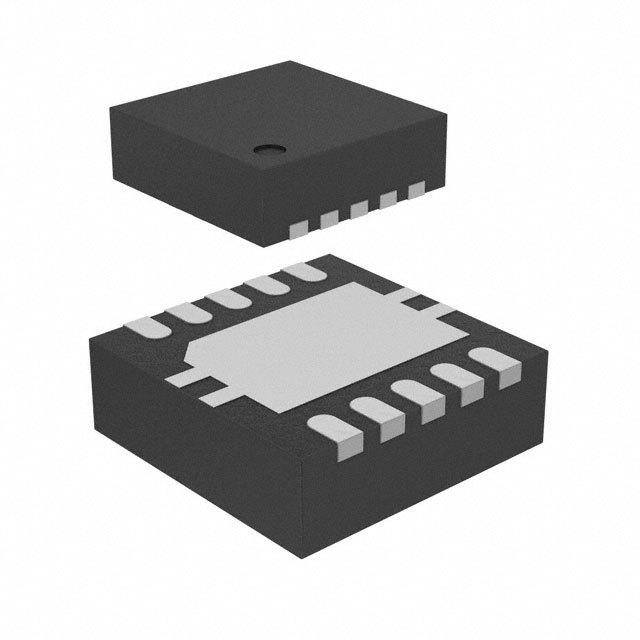
 Datasheet下载
Datasheet下载

